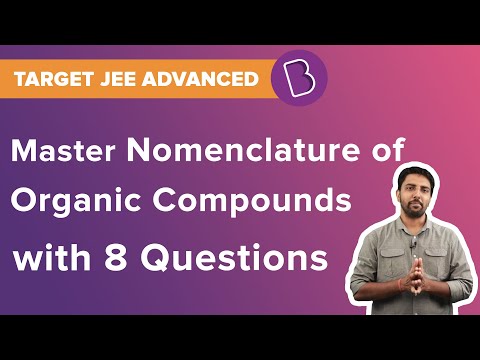According to the CBSE Syllabus 2023-24, this chapter has been renumbered as Chapter 8.
In this chapter, we will discuss some basic concepts in the structure and reactivity of organic compounds that are formed as a result of covalent bonding. The covalent bonding nature of organic compounds is expressed in terms of orbitals hybridization, where carbon can have sp2, sp, and sp3 hybridized orbitals. Some examples of sp, sp2 and sp3 hybridized carbons are ethane, ethyne, and methane. The shape of these compounds is easy to understand based on this concept.
Also Read: Organic Chemistry Class 11
Functional Group
The classification of organic compounds can be done on the basis of the functional group they contain or based on their structure. A group of atoms or atoms that are bonded together in a distinctive fashion to determine the chemical and physical properties of compounds is called a functional group. Organic compounds are named by following the rules laid down by the International Union of Pure and Applied Chemistry. Naming according to the IUPAC nomenclature will make it easy for the reader to deduce the structure of the compound from the name itself.
For more information on Isomerism, watch the below videos


Covalent Bond
When two atoms share one or more than one pair of electrons that hold them together a chemical bond is defined as a covalent bond. This bond can be cleaved in different fashions:
- Heterolytic – Yields carbanions or carbocations
- Homolytic – Offers free radicals as a reactive intermediate
| Also Access |
| NCERT Solutions for Class 11 Chemistry Chapter 12 |
| NCERT Exemplar for Class 11 Chemistry Chapter 12 |
Few Important Questions
- Answer the following with an example in brief:
- (a) Distillation
- (b) Chromatography
- (c) Crystallization
- Which acid is added to the sodium extract before the addition of silver nitrate to test Halogens? Why?
- Distinguish between distillation, steam distillation, and distillation under reduced pressure.
- Explain paper chromatography.
For more information on Organic Chemistry, watch the below videos


To discover more about this chapter and to download Class 11 Chemistry Notes, register with BYJU’S.
Other Important Links:
| Crystallization | Nomenclature of Organic Compounds |
Frequently Asked Questions on CBSE Class 11 Organic Chemistry Notes Chapter 12: Some Basics, Principles and Techniques
How to study and prepare for CBSE Class 11 Organic Chemistry?
Organic chemistry requires constant practise and familiarisation with the chemical formulas of compounds. A student should fully study and prepare the full syllabus of CBSE Class 11 Chemistry.
What is meant by isomerism?
Isomerism refers to the existence of molecules that have the same number of the same kinds of atoms but differ in chemical and physical properties.
What is the resonance effect?
The resonance effect is the polarity produced in a molecule due to the interaction between a lone pair of electrons and a pi bond, or it is produced due to the interaction of two pi bonds between two adjacent atoms.
Comments